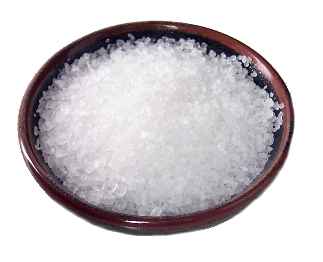Is sea salt healthier than regular salt?
 It’s a common misconception that sea salt is better for you than other forms. In fact 61 percent of respondents to a recent survey by the American Heart Association incorrectly said that sea salt is a low-sodium alternative to table salt. All salt has about 600 milligrams of sodium per quarter-teaspoon, though that can vary slightly among salts depending on crystal size and other factors. Some sea salt, for example, has larger, coarser crystals, so it might end up having a bit less sodium per teaspoon.
It’s a common misconception that sea salt is better for you than other forms. In fact 61 percent of respondents to a recent survey by the American Heart Association incorrectly said that sea salt is a low-sodium alternative to table salt. All salt has about 600 milligrams of sodium per quarter-teaspoon, though that can vary slightly among salts depending on crystal size and other factors. Some sea salt, for example, has larger, coarser crystals, so it might end up having a bit less sodium per teaspoon.
Sea salt is produced through the evaporation of sea water, so trace minerals from the sea are often present, which may slightly alter the salt’s flavor and color. Table salt is mined from underground. It’s generally finer in texture, and it’s more processed and includes anti-caking agents, such as calcium silicate (sea salt might clump). Also, table salt is sometimes fortified with iodine, added to prevent thyroid problems such as goiter. Bottom line: Use either type sparingly, especially if you have high blood pressure.

